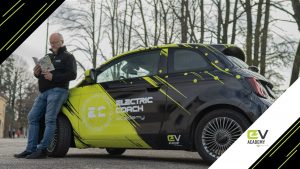What happens from July 6th? Speed limiters and black boxes?

As often happens, the newspapers headline news in large letters that scare the public opinion on a superficial reading and trigger endless and often useless controversies, especially in this era where social networks have given a sort of degree in wholeness to anyone who connects.
It is a lethal mix for those who want to provide correct information and especially for those who want to be correctly informed!
Normally, in order to try to be as reliable as possible, it is good practice to draw from the source of the news, which in this case is the European Regulation 2019/2144 of November 27, 2019, which established which safety and driver assistance systems must be equipped with newly approved vehicles.
You can find it, also in Italian, at this link together with all the related and explanatory documents: https://eur-lex.europa.eu/IT/legal-content/summary/type-approval-requirements-to-ensure-the-general-safety-of-vehicles-and-the-protection-of-vulnerable-road-users.html
The devices listed in the regulation are the following:
- a) intelligent speed adaptation; (ISA)
- b) interface for installing alcohol-lock type devices;
- c) warning of inattention and fatigue of the driver
- d) advanced driver distraction warning
- e) emergency stop signaling;
- f) detection in reverse;
- g) event data recorder.
Let's try to summarize what the regulation reports also taking into account the subsequent provisions issued which you can always find at the link above, starting from an essential fact: in Europe currently, with a small exception in Germany, autonomous driving of a higher level than 2, which means that NO device can bypass the will of the driver as the latter is regardless always responsible for what happens to the car.
It means that the driver must always be able to decide what to do by bypassing the electronic aids, even temporarily disabling them if needed.
Having clarified this, let's see what the regulation says by quoting it verbatim and inserting some of my considerations / explanations in italics:
- Intelligent speed adaptation systems meet the following minimum requirements:
- It must be possible to inform the driver by means of the accelerator control, or by other specific, adequate and effective signal, that the applicable speed limit has been exceeded; (the system then INFORMS that the limit has been exceeded)
- it must be possible to shut down the system; speed limit information can still be provided and Intelligent Cruise Control is in normal operating mode each time the vehicle's main switch is activated; (It means that if I turn it off, when I turn the vehicle back on, as well as for any safety system, it must be active by default)
- the dedicated and adequate signal is based on information relating to the speed limit, obtained by observing road signs (therefore with the help of cameras for example) and by means of signals from the road infrastructure (when and if the so-called Smart Roads will be activated) or from digital cartography data (Navigator integrated in the car), or both, available on board the vehicle;
- do not affect the ability for drivers to exceed the vehicle speed suggested by the system;(it means that the driver can always increase the speed of the vehicle, albeit with warnings to that effect, because the driver always decides)
- its performance objectives must be set in a way that avoids or minimizes the error rate in accordance with real driving conditions.
In practice, when the vehicle is switched on, the system is active by default, imagine as if the ACC was always active to understand us, and it can not only warn as mentioned above, also remove torque from the engine to slow down (therefore DO NOT BRAKE) the vehicle and bring it back within the limits. If used where the signals are read right it is an excellent ally for not exceeding the speed limits. In case you do not want to use technology, either for personal reasons, or for badly made signs, just deactivate it, or, if it is an overtaking or similar, just the kickdown.
In the regulation 2021/1958 of modification and integration then it is written that for two years the interactions with this system and its actual benefit will be evaluated, therefore it is not written that after two years it will be impossible to deactivate it but that from 7 July 2024, date of the first report of the manufacturers, these will have to continue to monitor the thing every six months and for two years by sending anonymized data of course.
- Alcohol-lock device installation interface. The vehicles must simply be prepared for an easy assembly of this device even aftermarket.
- warning of inattention and fatigue of the driver e
- advanced driver distraction alert they are similar to each other, with the difference that the first warns the driver while the second also helps the driver for example by lowering the radio or disconnecting the cruise control or something like that. The regulations require NOT to save any biometric data since the systems can also use facial recognition for fatigue etc.
- emergency stop signal. This is a function already present in many vehicles which, for example, makes the stops flash, also activating the emergency signal in the event of sudden sudden braking, to attract the attention of those following.
- reverse detection: a system that warns the driver of the presence of people or objects behind the vehicle, with the primary purpose of avoiding collisions while reversing Function already present in many vehicles with radar and / or rear cameras suitable for the purpose
- Event data loggers meet the following requirements in particular:
- The data that they are capable of recording and storing for the period immediately before, during and immediately after a collision includes at least the vehicle speed, braking, the position and inclination of the vehicle on the road, the state and frequency of activation all of its safety systems, the 112 service-based eCall in-vehicle system, brake activation and any other relevant input parameters of the in-vehicle active safety and accident prevention systems; these data are of a high level of accuracy and their safeguarding is guaranteed;
- They cannot be deactivated;
- The data is recorded and stored in order to:
- operate on a closed loop system;
- the data collected is anonymized and protected from manipulation and abuse; And
- the data collected allows accurate identification of the type, variant and version of the vehicle and of the active safety and accident prevention systems fitted to that vehicle; And
- the data they are able to record may be made available to national authorities, through a standardized interface, according to national or Union law, only for the purposes of research and analysis in relation to the incident, including the end of the approval of systems and components and in accordance with Regulation (EU) 2016/679.
An event data recorder is unable to record and store the last four digits of the vehicle indicator section (VIS) code of the vehicle identification number (VIN), nor any other information that would allow the individual vehicle or vehicle to be identified. owner or holder of the vehicle. This device has already existed for many years on many cars, and is nothing more than a control unit that collects about 30 seconds of data between before, during and after a collision or an accident. It must comply with the privacy protection requirements and in particular, in the regulation 2022/545 on this issue it is specified that "The data recorded by the event data logger shall not be available if accessible interfaces are used for retrieval without the need to unlock the vehicle doors or use tools, or vehicle interfaces for wireless connections."
Therefore a physical connection to the device is always required, either through the serial port or directly on the device itself.
This is the current state of affairs, and it is clear that the goal is not to make everyone succumb to technology but on the contrary to make technologies available to help drivers and road safety more and more, without affecting anyone's freedom.
Click on the images below and follow us on our social channels for further information.




